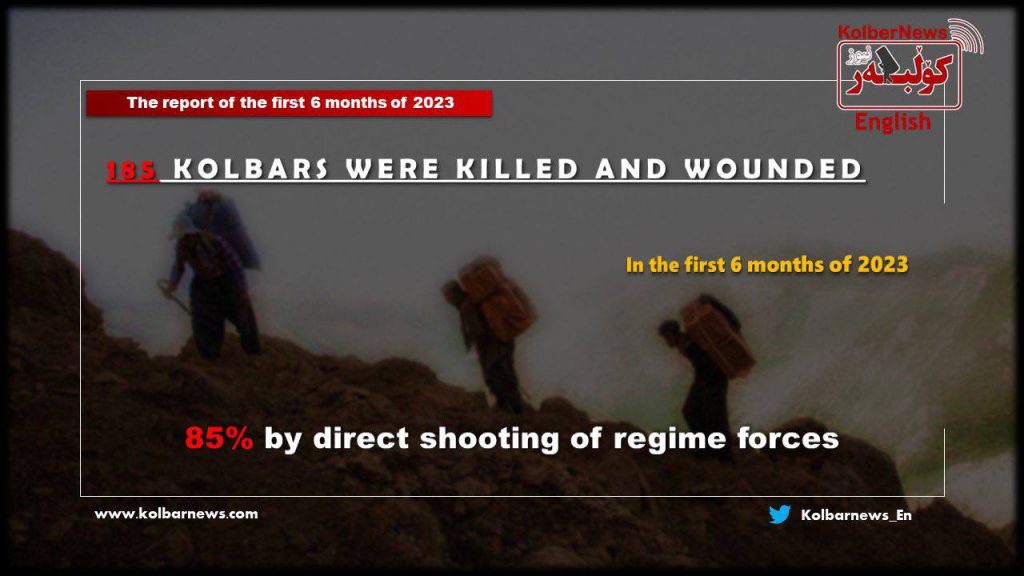
An overview of the diversity and breadth of kolbari activities among various segments of Kurdistan, especially in recent years, indicates a state of political-economic emergency prevailing in this region. Inequality and imbalanced structures have affected all economic, political, and cultural indicators, presenting alarming statistics in all aspects of human life. The implementation of discriminatory economic policies, class-based and nationalist politics, coercive policies, and militarization have led to the suppression, elimination, and denial of distinct identities, resulting in a wide range of dangerous and unconventional activities such as kolbari in Kurdistan and sukhbari in Balochistan.
The absence of job opportunities, as well as the lack of or inequality in investment systems in border cities due to their exclusion from development plans, has destroyed all economic infrastructure in these regions, leading to the emergence of an unstable and unsustainable form of economy and livelihood. Poverty, unemployment, commodification, and unstable employment are only some of the consequences. The people of Kurdistan, including unemployed workers, educated individuals without employment prospects, breadwinning women, young boys and girls living in poor families, patients forced into kolbari to cover their living expenses and the cost of essential medication and treatment, hardworking border residents of Kurdistan who receive no support from the regime other than militarization and repression, elderly individuals without retirement benefits or unemployment insurance, and many others, are all caught up in this dangerous phenomenon. It is an issue that makes kolbari a central component of our understanding of the socio-political and economic situation in Kurdistan.
However, amidst all this, news of the daily killings of kolbars has added to the tragic nature of this phenomenon. Crossing the treacherous mountains of Zagros in cold weather, snowstorms, and ambushes by the Revolutionary Guards and law enforcement forces, the danger of exploding landmines left from the Iran-Iraq war, the unavoidable physical strain caused by carrying several kilos of goods, the risk of falling from heights, and accidents on the roads—all contribute to the difficult working conditions and hardships faced by kolbars in their quest to make a living. Nevertheless, direct pursuit, shooting, and killing by border military forces have remained one of the most fundamental factors leading to the deaths and injuries of kolbars throughout these years. The daily massacre of kolbars is an organized crime that affects those whose lives depend on it and its eradication is not only essential but also requires a comprehensive response at the societal level.
Given the current political situation in Iran and Kurdistan, and the ongoing massacre of kolbars, the people of Kurdistan, especially workers, must not remain silent in the face of this crime. Workers and oppressed people of Kurdistan should unite their voices with the activists and leaders of the workers’ movement and all revolutionary individuals, and continue their struggle against the killing of kolbars and prioritize the eradication of kolbari as part of their demands and struggles towards the elimination of all forms of injustice and the establishment of a dignified human society.
We draw your attention to the statistics gathered by Kolbar News:
A total of 61 Kolbars (border couriers) have been recorded in the border areas based on the statistics collected by Kolbar News in the first six months of 2023. They have been killed or injured due to factors such as direct shooting by military forces, extreme cold weather, stepping on mines, mines on the mountains and heights, and other incidents.
- Out of this total number, 11 Kolbars, equivalent to 18%, have been killed, and 50 Kolbars, equivalent to 82%, have been injured.
- Out of the 61 Kolbars who have been killed or injured in the first six months of 2023, a total of 42 cases, equivalent to 69%, have been the result of direct shooting by military forces.
o The status of the fatalities is as follows: out of the 11 Kolbars who have been killed:
- 4 individuals have been killed due to direct shooting by military forces.
- 1 individual has died due to extreme cold weather.
- 1 individual has died due to other causes such as a heart attack during Kolbari.
- 2 individuals have died due to accidents on the Kolbari route.
- 1 individual has died due to falling from a height during Kolbari.
- 2 individuals have died due to drowning in water on the Kolbari route.
o The status of the injured individuals is as follows, out of the total number of Kolbars who have been injured:
- 35 individuals have been injured due to direct shooting by military forces.
- 3 individuals have been injured due to falling from mountains and heights.
- 1 individual has been injured due to a mine explosion.
- 3 individuals have been injured due to physical assault by border forces.
- 7 individuals have been injured in accidents while going to Kolbari.
- 1 individual has been injured due to snow and extreme cold weather.
o The statistics of Kolbars killed and injured in the first six months of 2023, categorized by provinces, are as follows:
- In West Azerbaijan Province, a total of 5 Kolbars, equivalent to 8%, have been killed and injured.
- In Kurdistan Province, a total of 21 Kolbars, equivalent to 34%, have been killed and injured.
- In Kermanshah Province, a total of 35 Kolbars, equivalent to 58%, have been killed and injured.
o The statistics of Kolbars killed and injured in the first six months of 2023, categorized by months, are as follows:
- In January, a total of 8 Kolbars, equivalent to 13%, have been killed and injured.
- In February, a total of 14 Kolbars, equivalent to 23%, have been killed and injured.
- In March, a total of 5 Kolbars, equivalent to 8%, have been killed and injured.
- In April, a total of 7 Kolbars, equivalent to 11%, have been killed and injured.
- In May, a total of 12 Kolbars, equivalent to 20%, have been killed and injured.
- In June, a total of 15 Kolbars, equivalent to 25%, have been killed and injured.

